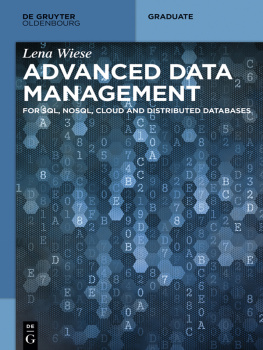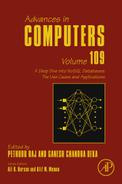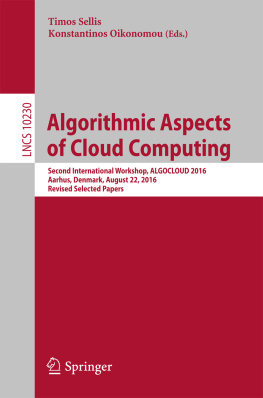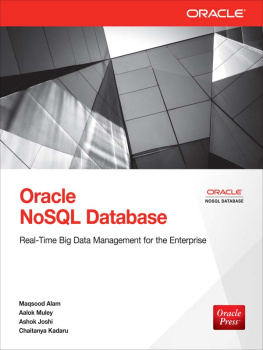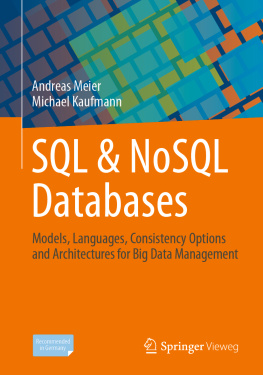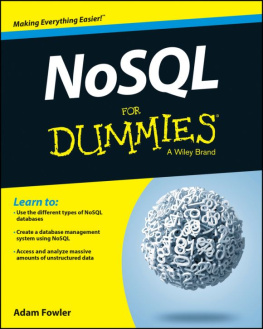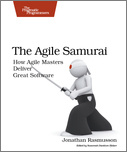Wiese - Advanced data management : for SQL, NoSQL, Cloud and distributed databases
Here you can read online Wiese - Advanced data management : for SQL, NoSQL, Cloud and distributed databases full text of the book (entire story) in english for free. Download pdf and epub, get meaning, cover and reviews about this ebook. City: Oldenburg, year: 2015, publisher: De Gruyter, genre: Computer. Description of the work, (preface) as well as reviews are available. Best literature library LitArk.com created for fans of good reading and offers a wide selection of genres:
Romance novel
Science fiction
Adventure
Detective
Science
History
Home and family
Prose
Art
Politics
Computer
Non-fiction
Religion
Business
Children
Humor
Choose a favorite category and find really read worthwhile books. Enjoy immersion in the world of imagination, feel the emotions of the characters or learn something new for yourself, make an fascinating discovery.
Advanced data management : for SQL, NoSQL, Cloud and distributed databases: summary, description and annotation
We offer to read an annotation, description, summary or preface (depends on what the author of the book "Advanced data management : for SQL, NoSQL, Cloud and distributed databases" wrote himself). If you haven't found the necessary information about the book — write in the comments, we will try to find it.
Advanced data management : for SQL, NoSQL, Cloud and distributed databases — read online for free the complete book (whole text) full work
Below is the text of the book, divided by pages. System saving the place of the last page read, allows you to conveniently read the book "Advanced data management : for SQL, NoSQL, Cloud and distributed databases" online for free, without having to search again every time where you left off. Put a bookmark, and you can go to the page where you finished reading at any time.
Font size:
Interval:
Bookmark:
Lena Wiese
Advanced Data Management
De Gruyter Graduate
 | Datenbanksysteme, 10. Auflage A. Kemper, 2016 ISBN 978-3-11-044375-2 |
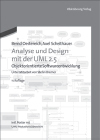 | Analyse und Design mit der UML 2.5, 11. Auflage B. Oestereich, A. Scheithauer, 2011 ISBN 978-3-486-72140-9 |
 | Die UML-Kurzreferenz 2.5 fr die Praxis, 6. Auflage B. Oestereich, A. Scheithauer, 2014 ISBN 978-3-486-74909-0 |
 | Algorithmen Eine Einfhrung, 4. Auflage T. Cormen et al., 2013 ISBN 978-3-486-74861-1 |

Author
Dr. Lena Wiese
Georg-August-Universitt Gttingen
Fakultt fr Mathematik und Informatik
Institut fr Informatik
Goldschmidtstrae 7
37077 Gttingen
Germany
ISBN 978-3-11-044140-6
e-ISBN (PDF) 978-3-11-044141-3
e-ISBN (EPUB) 978-3-11-043307-4
Library of Congress Cataloging-in-Publication Data
A CIP catalog record for this book has been applied for at the Library of Congress.
Bibliographic information published by the Deutsche Nationalbibliothek
The Deutsche Nationalbibliothek lists this publication in the Deutsche Nationalbibliografie;
detailed bibliographic data are available on the Internet at http://dnb.dnb.de
2015 Walter de Gruyter GmbH, Berlin/Boston
Cover image: Tashatuvango/iStock/thinkstock
www.degruyter.com
During the last two decades, the landscape of database management systems has changed immensely. Based on the fact that data are nowadays stored and managed in network of distributed servers (clusters) and these servers consist of cheap hardware (commodity hardware), data of previously unthinkable magnitude (big data) are produced, transferred, stored, modified, transformed, and in the end possibly deleted. This form of continuous change calls for flexible data structures and efficient distributed storage systems with both a high read and write throughput. In many novel applications, the conventional table-like (relational) data format may not the data structure of choice for example, when easy exchange of data or fast retrieval become vital requirements. For historical reasons, conventional database management systems are not explicitly geared toward distribution and continuous change, as most implementations of database management systems date back to a time where distributed storage was not a major requirement. These deficiencies might as well be attributed to the fact that conventional database management systems try to incorporate several database standards as well as have high safety guarantees (for example, regarding concurrent user accesses or correctness and consistency of data).
Several kinds of database systems have emerged and evolved over the last years that depart from the established tracks of data management and data formats in different ways. Development of these emergent systems started from scratch and gave rise to new data models, new query engines and languages, and new storage organizations. Two things are particularly remarkable features of these systems: on the one hand, a wide range of open source products are available (though some systems are supported by or even originated from large international companies) and development can be observed or even be influenced by the public; on the other hand, several results and approaches achieved by long-standing database research (having its roots at least as early as the 1960s) have been put into practice in these database systems and these research results now show their merits for novel applications in modern data management. On the downside, there are basically no standards (with respect to data formats or query languages) in this novel area and hence portability of application code or long-term support can usually not be guaranteed. Moreover, these emerging systems are not as mature (and probably not as reliable) as conventional established systems.
The term NOSQL has been used as an umbrella term for several emerging database systems without an exact formal definition. Starting with the notion of NoSQL (which can be interpreted as saying no to SQL as a query language) it has evolved to mean not only SQL (and hence written as NOSQL with a capital O). The actual origin of the term is ascribed to the 2009 NOSQL meetup: a meeting with presentations of six database systems (Voldemort, Cassandra, Dynomite, HBase, Hypertable, and CouchDB). Still, the question of what exactly a NOSQL database system is cannot be answered unanimously; nevertheless, some structure slowly becomes visible in the NOSQL field and has led to a broad categorization of NOSQL database systems. Main categories of NOSQL systems are key-value stores , document stores , extensible record stores (also known as column family stores ) and graph databases . Yet, other creatures live out there in the database jungle: object databases and XML databases do not espouse the relational data model nor SQL as a query language but they typically would not be considered NOSQL database systems (probably because they predate the NOSQL systems). Moreover, column stores are an interesting variant of relational database systems.
This book is meant as a textbook for computer science lectures. It is based on Master-level database lectures and seminars held at the universities of Hildesheim and Gttingen. As such it provides a formal analysis of alternative, non-relational data models and storage mechanisms and gives a decent overview of non-SQL query languages. However, it does not put much focus on installing or setting up database systems and hence complements other books that concentrate on more technical aspects. This book also surveys storage internals and implementation details from an abstract point of view and describes common notions as well as possible design choices (rather than singling out one particular database system and specializing on its technical features).
This book intends to give students a perspective beyond SQL and relational database management systems and thus covers the theoretical background of modern data management. Nevertheless this book is also aimed at database practitioners: it wants to help developers or database administrators coming to an informed decision about what database systems are most beneficial for their data management requirements.
This book consists of four parts. Part I Introduction commences the book with a general introduction to the basics of data management and data modeling.
Chapter 1 Background (page 3) provides a justification why we need databases in modern society. Desired properties of modern database systems like scalability and reliability are defined. Technical internals of database management systems (DBMSs) are explained with a focus on memory management. Central components of a DBMS (like buffer manager or recovery manager) are explored. Next, database design is discussed; a brief review of Entity-Relationship Models (ERM) and the Unified Modeling Language (UML) rounds this chapter off. Chapter 2 Relational Database Management Systems (page 17) contains a review of the relational data model by defining relation schemas, database schemas and database constraints. It continues with a example of how to transform an ERM into a relational database schema. Next, it illustrates the core concepts of relational database theory like normalization to avoid anomalies, referential integrity, relational query languages (relational calculus, relational algebra and SQL), concurrency management and transactions (including the ACID properties, concurrency control and scheduling).
Next pageFont size:
Interval:
Bookmark:
Similar books «Advanced data management : for SQL, NoSQL, Cloud and distributed databases»
Look at similar books to Advanced data management : for SQL, NoSQL, Cloud and distributed databases. We have selected literature similar in name and meaning in the hope of providing readers with more options to find new, interesting, not yet read works.
Discussion, reviews of the book Advanced data management : for SQL, NoSQL, Cloud and distributed databases and just readers' own opinions. Leave your comments, write what you think about the work, its meaning or the main characters. Specify what exactly you liked and what you didn't like, and why you think so.

